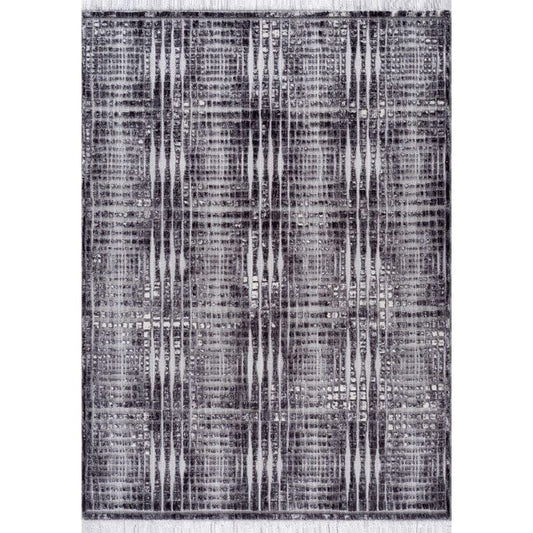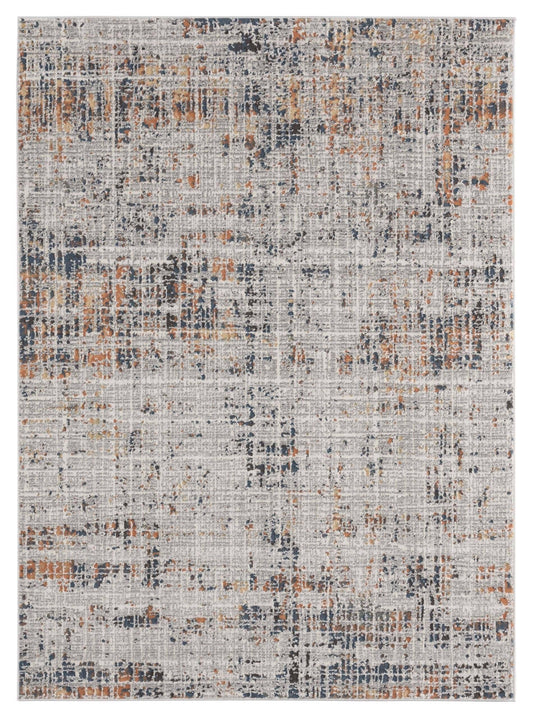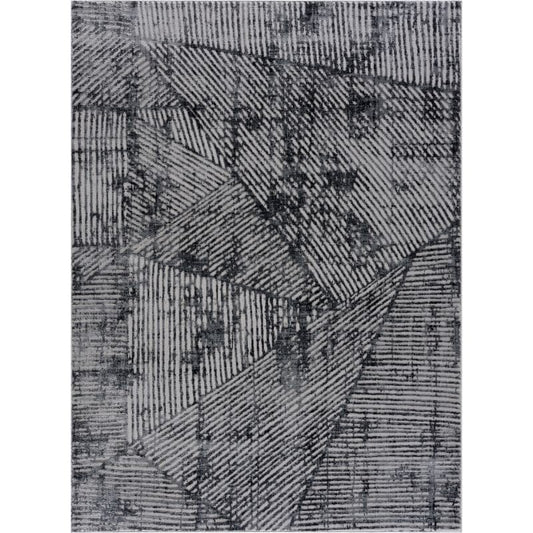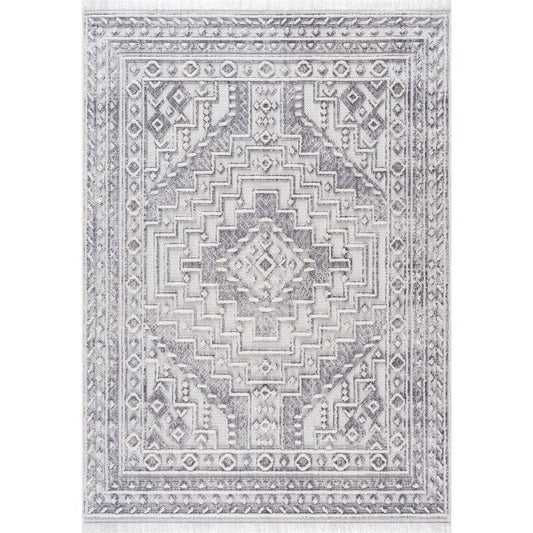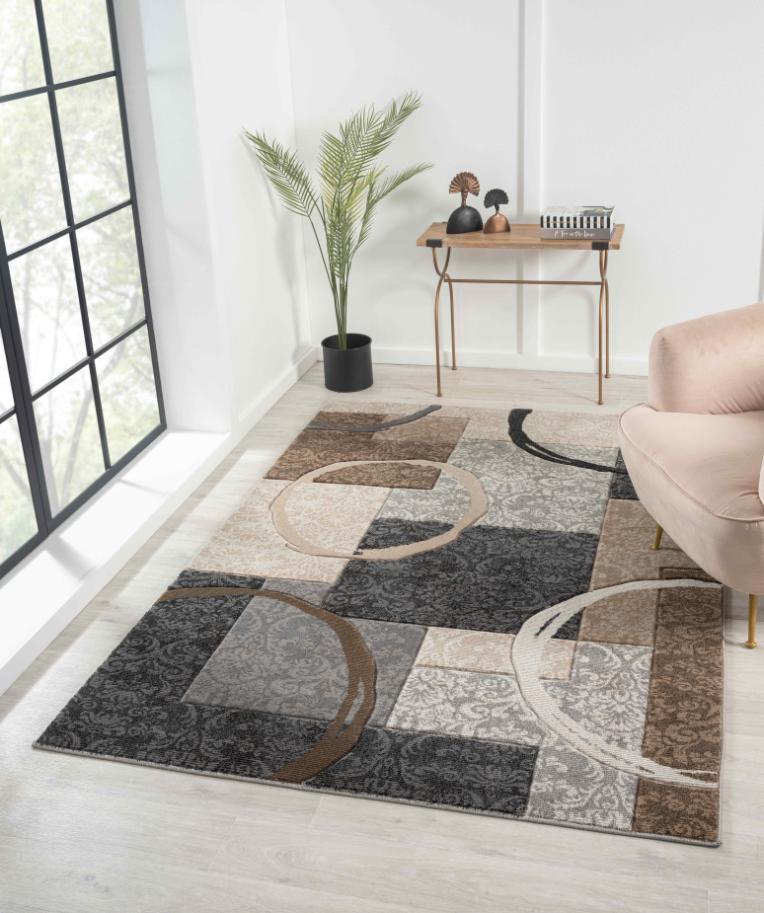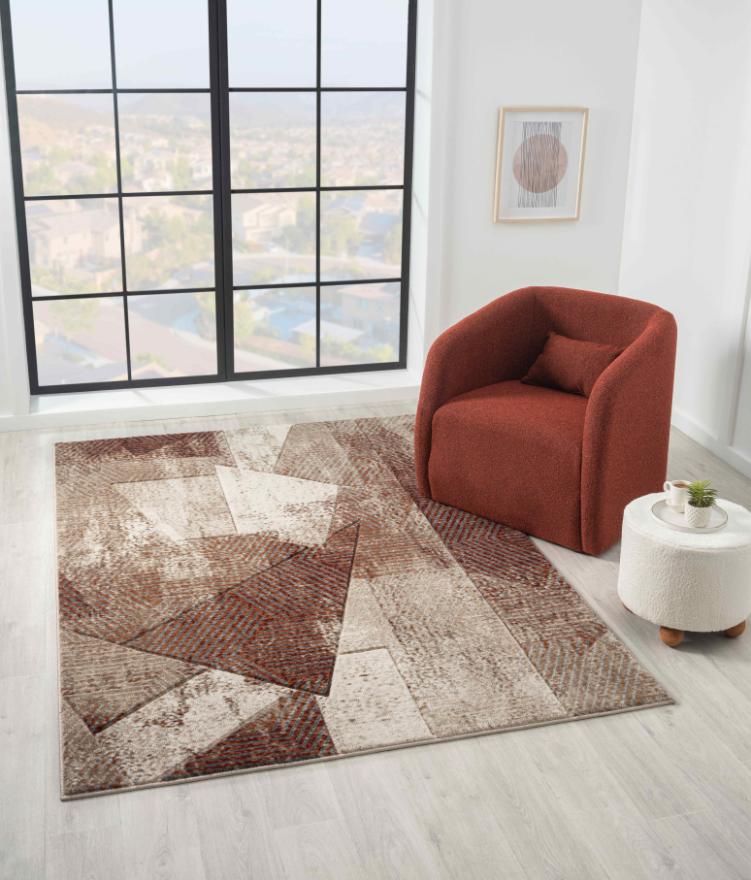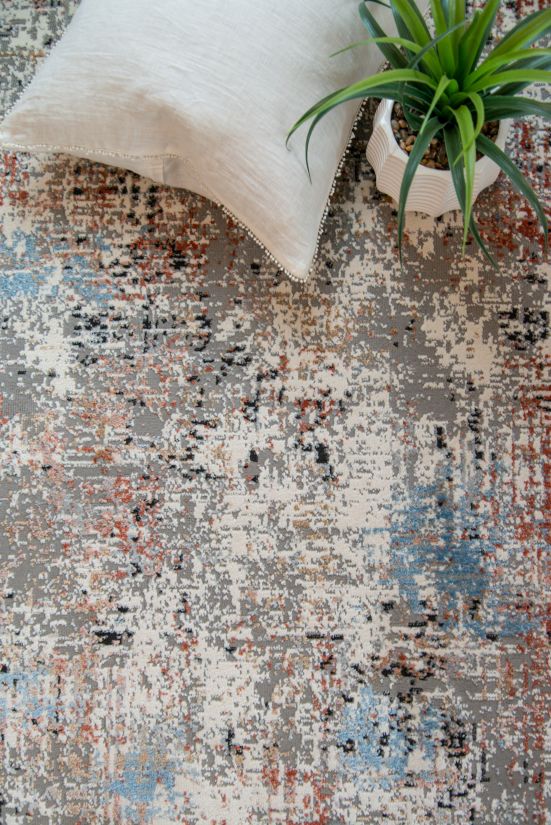Are you hoping to make your living areas into inviting retreats? Rug placement is one essential element that often gets overlooked but can significantly impact a room's overall aesthetic and functionality.
From the bedroom to the living room and dining area, rugs play a vital role in tying together the design elements while adding warmth, texture, and comfort.
In this detailed guide, we'll dig into the art of rug placement, delivering insightful advice on arranging rugs properly, choosing the appropriate size for various spaces, and providing helpful recommendations to make the most of this adaptable home décor item.
Buy Top Selling Rugs Products for Home
Understanding Rug Placement:
Rug placement is more than just randomly placing a rug on the floor. It involves thoughtful consideration of the room's layout, purpose, and furniture placement. Following these fundamental principles, you can achieve a harmonious and visually pleasing rug arrangement.
How should a rug be placed?
To ensure a well-balanced room, consider the following factors when placing a rug:
Anchoring the room: Start by determining the focal point and purpose of the room to guide your rug placement. A rug can help anchor furniture and create a cohesive look.
Centering or offsetting: Choose whether to position the rug at the center of the room or offset it for a layered effect. Consider the size and shape of the room when making this decision.
Defining areas: Rugs can create distinct areas within an open-concept or large room. Rug positioning strategically allows you to visually define zones such as a seating area or dining space.
Where should rugs be placed in a home?
Different rooms have unique requirements when it comes to rug placement. Let's explore the various placement options for rugs in the most common areas of a home:
Living Room:
The living room is often the heart of the home, and rug placement can significantly impact the overall look and feel of the space. Consider the following options:
Under furniture: Placing the rug under the front legs of sofas and chairs can anchor the seating area and create a cohesive grouping.
Partially under furniture: If you have a larger rug, you can place it so that all the furniture legs are on it, creating a unified and spacious look.
Central statement piece: A large living room rug in the center of the room can make a bold statement and serve as a focal point.
Bedroom:
Bedroom rugs add warmth, comfort, and a touch of luxury. Consider these Bedroom rug placement options:
Under the bed: Place a rug under the bed, extending beyond the sides and foot, to create a soft and cozy landing spot for your feet when you wake up.
Extending beyond the bed: If you have a more oversized bedroom, you can opt for a rug that extends beyond the bed to create a designated seating or dressing area.
Framing the entire sleeping area: Choose a rug large enough to frame the entire bed for a luxurious look, creating a sense of luxury and elegance.
Dining Room:
Rugs in the dining room can define the space and add visual interest. Consider these factors when placing a rug in your dining area:
Table size and shape: Choose a rug that accommodates the dining table and allows enough space for chairs to move freely when pulled in and out.
Practicality: Opt for a rug that can withstand spills and be easily cleaned, considering that dining rooms are prone to food and drink mishaps.
Shape: Round or square rugs can be considered based on the shape of your table and room. Rectangular rugs are the most typical choice for dining rooms.
Choosing the Right Size Rug For an Ideal Rug Placement:
The appropriate rug size is crucial for a balanced and visually appealing space. Let's explore the suitable rug layouts for different rooms:
Bedroom:
Whether you are considering Rug placement in small bedroom or Rug placement in large bedroom, it's essential to consider the size of your bed. The right rug size can enhance the overall aesthetic and comfort of the space. Here are some considerations for selecting the perfect bedroom rugs for the ideal rug placement:
Twin, Full, or Queen beds:
- If you have a smaller bed, such as a twin, complete, or rug under queen bed, you can choose a rug that sits entirely under the bed. This creates a soft and luxurious feel underfoot as you step out of bed in the morning. The rug should extend from the foot of the bed to the headboard, with the sides reaching beyond the bed frame's width. This placement ensures the rug is fully visible and creates a cohesive look.
- Another approach is to select a rug that extends beyond the sides and foot of the bed, creating a generous border around the bed. This option adds a touch of luxury and visual interest to the room. The rug should be large enough like 8x10 rug to accommodate bedside tables if you have them. This placement also provides a soft landing spot for your feet when you leave the bed.
King beds:
- Placing a rug at the foot of the bed can add a cozy touch for more extensive beds like a rug under king bed. Choose a rug that complements the room's overall design and extends beyond the foot of the bed by about 2 to 3 feet. This placement creates a focal point at the foot of the bed and adds warmth and texture to the space.
- If you prefer a more symmetrical look, consider using multiple rugs. Place one rug on each side of the bed, creating a balanced and visually appealing arrangement. These rugs should be large enough to extend beyond the sides of the bed, creating a cohesive look with the rest of the room's decor.
Remember, the size of your rug should be proportionate to the size of your bed and the room's overall dimensions. It's also important to consider any additional furniture in the bedroom, such as dressers or chairs, and ensure the rug size accommodates them without feeling crowded.
By selecting the right rug size for your bedroom, you can create a cozy and visually pleasing environment that adds comfort and style to your personal space.
Living Room:
When choosing a rug for your living room, the size of the room and the arrangement of your furniture play a crucial role in determining the ideal rug size. A well-proportioned rug placement can tie the room together and create a cohesive and inviting space. Consider the following details when selecting a rug size for your living room:
Sofa and seating arrangement:
- If you have a spacious living room with a larger seating area, consider choosing a rug that accommodates the entire seating arrangement. The rug should be large enough like an 8x10 rug or 10x14 rug to allow all the furniture legs to sit on or off the rug. This Rug placement in living room creates a look and defines the seating area within the room. The rug should extend beyond the edges of the furniture, providing ample space and creating a sense of luxury and comfort.
- In a smaller living room, you may opt for a rug that anchors the central seating area. The rug should extend just beyond the coffee table and be proportional to the size of the furniture. This placement creates a cozy and intimate gathering space while allowing some of the floor to be visible around the rug, giving the illusion of a larger room.
Coffee table placement:
- Consider the position of your coffee table about the seating arrangement. If your coffee table is the focal point of the living room, you can choose a rug that extends beyond the table on all sides. This ensures that the rug encompasses the entire seating area and adds visual balance and harmony. The rug should be large enough to allow the front legs of the furniture to rest on it, creating a cohesive grouping.
- Alternatively, if your coffee table is smaller or positioned closer to the furniture, you can choose a rug that sits just underneath it. This rug placement adds a layer of texture and defines the coffee table area within the room without overwhelming the space. Ensure that the rug is proportionate to the size of the coffee table and allows for comfortable movement around the seating area.
It's essential to measure your living room and carefully consider the size and arrangement of your furniture before selecting a rug, especially when doing rug placement under couch or rug placement with sectionals. Remember that a larger rug tends to make the room feel more spacious and cohesive, while a smaller rug can create a more intimate and defined seating area. Ultimately, the goal is to choose a rug size that complements the room's overall aesthetics and enhances the space's comfort and functionality.
Dining Room:
When choosing a rug for your dining room, finding the right size is crucial to achieving a harmonious and functional space. The rug should complement the dining table and chairs like 5x7 rug, while allowing enough room for movement and a balanced aesthetic. Set the stage for memorable meals with our carefully chosen dining room rugs. Here are some detailed guidelines for selecting the perfect rug size for your dining room:
Table size and shape:
- Choose a rug that accommodates the entire dining table and chairs. Measure the length and width of your table and add at least 2 feet to each measurement. This extra space ensures the rug extends beyond the table on all sides, even when the chairs are pulled out. This setup provides a visually balanced look and prevents chairs from catching on the edge of the rug when they are pushed back in.
- If you prefer a smaller rug or your dining space is limited, you can choose a rug that fits just under the table and doesn't extend beyond the chairs. In this case, ensure the rug is large enough to fully accommodate the table and provide a buffer zone around it.
Practicality:
- Consider the practicality of the rug material and design in a dining room setting. Opt for a rug that is easy to clean and can withstand spills and stains. Materials like wool or synthetic blends are durable and stain-resistant, making them ideal for dining areas. Avoid delicate or light-colored rugs that may show stains easily.
Shape:
- Rectangular rugs are the most common choice for dining rooms as they perfectly complement rectangular or oval-shaped tables. Choose a rug that mirrors the shape of your table for a cohesive and balanced look.
- As an alternative, think about a circle rug that goes beyond the boundaries of your round dining table. This creates a visually pleasing and cohesive arrangement.
- For square dining tables, you can opt for either a square rug that mirrors the table shape or a round rug that contrasts with the square shape, adding visual interest to the space.
Remember, the rug should be large enough to accommodate the table and chairs comfortably. It's essential to measure the dimensions of your dining room and table before selecting a rug to ensure the proper fit.
By following these guidelines and choosing the right rug size for your dining room, you can create a visually appealing and functional space where you and your guests can enjoy meals in style and comfort. When it comes to choosing a rug for your living room, the size of the room and the
Rug Placement Tips:
In addition to understanding the principles and guidelines for rug placement, some valuable rug placement tips can help you make the most of your rugs and elevate your home decor:
Layering rugs:
Experiment with layering rugs to add depth and visual interest to a room. Layering allows you to play with different textures, patterns, and colors, creating a unique and personalized look. For example, you can layer a smaller patterned rug over a larger solid-colored rug to create a focal point or add a pop of color.
Rug materials:
Consider the rug material based on foot traffic, comfort, and maintenance requirements. Natural fibers like wool are durable and offer a luxurious feel, making them excellent choices for high-traffic areas. Synthetic fibers like nylon or polyester are more stain-resistant and easier to clean, making them suitable for areas prone to spills or messes.
Rug patterns and colors:
Choose rug patterns and colors that complement the room's decor and create a harmonious ambiance while talking about rug placement. If you have bold, vibrant furniture or wallpaper, consider a more neutral or solid-colored rug to balance the visual elements. On the other hand, if the room's decor is more understated, you can opt for a rug with a bold pattern or vibrant colors to serve as a focal point.
Rug maintenance:
Regularly vacuum and clean your rugs to keep them in optimal condition. Different rug materials may have specific cleaning requirements, so follow the manufacturer's guidelines for cleaning and maintenance. Promptly address any spills or stains by blotting them with a clean cloth and using appropriate cleaning products. Additionally, rotating your rugs periodically can help distribute wear and maintain their appearance.
Non-slip solutions:
Consider using rug pads or non-slip rug grips to prevent rugs from slipping on hardwood or tile floors. These accessories provide stability and safety, ensuring your rugs stay in place. Rug pads also offer additional cushioning and can help extend the life of your rugs by reducing friction between the rug and the floor.
Customizing rug shapes:
Don't limit yourself to traditional rectangular rugs. Explore different rug shapes to add visual interest and uniqueness to your space. Round rugs can soften sharp angles in a room and work well under circular tables. Square rugs can complement square or symmetrical furniture arrangements. Consider the overall layout and flow of the room to determine which rug shape works best.
Personal style and experimentation:
Ultimately, rug placement is an opportunity to showcase your style and creativity. Don't be afraid to experiment with different rug sizes, shapes, patterns, and placements to find what works best for your space. Trust your instincts and have fun exploring different possibilities.
Conclusion:
Proper rug placement is an art that can significantly enhance your home decor. By understanding the principles of rug placement, choosing the right rug size for different rooms, and following valuable tips, you can create visually appealing, functional, and inviting spaces. Whether you're aiming to transform your living room, add coziness to your bedroom, or define the dining area, rugs play a vital role in tying together the design elements and elevating the overall aesthetic of your home. So, embrace the versatility of rugs, unleash your creativity, and enjoy the transformative power they bring to your living spaces.
FAQs
How should a rug be placed?
A rug can be placed differently depending on the room and furniture layout. It can be positioned under furniture, partially under furniture, or as a central statement piece. The placement should be determined by the room's purpose, focal points, and the overall aesthetic you want to achieve.
Where should rugs be placed in a home?
Rugs can be placed in various home areas, including the living room, bedroom, dining room, entryway, and hallway. The placement will depend on the function of each space and how you want to define and enhance the area.
What is the rule for a rug under a sofa?
When placing a rug under a sofa, there are a few rules to consider. One option is to position the rug so that the front legs of the sofa are on the rug while the back legs remain off the rug. This helps anchor the sofa and creates a cohesive look. Another option is placing the entire sofa and accompanying furniture on the rug for a more unified and spacious feel.
Should a rug be placed in the middle of a space?
The placement of a rug in the center of a room depends on the room's layout and your design preferences. Placing a rug in the center can make it a focal point and add visual interest. However, in some cases, you may offset the rug or position it under specific furniture to create a layered effect or define specific areas within the room.

